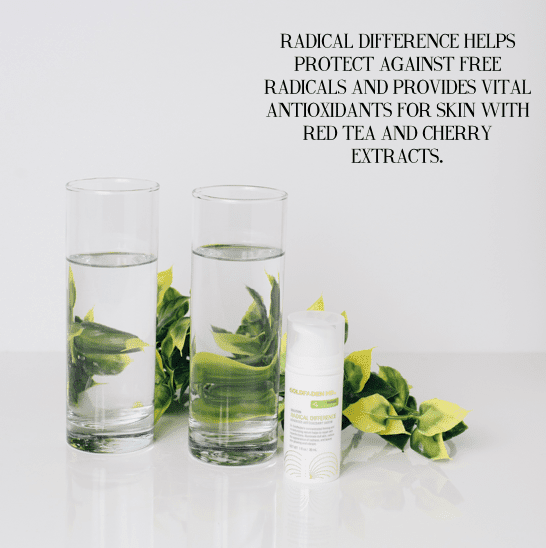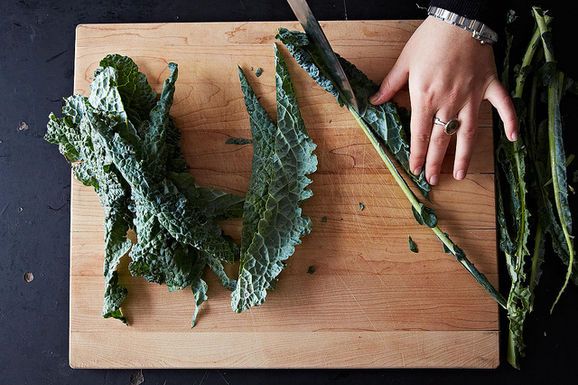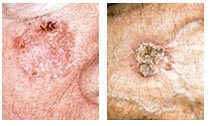Years of daily exposure to ultraviolet radiation from the sun take their toll on your skin. Sun-damaged skin becomes dry and rough, uneven patches and dark spots begin to appear, fine lines and wrinkles deepen, and your skin loses its firmness and elasticity. And, if you spent any part of your youth sunbathing you may find that your skin looks years older than you feel. Scientific research has led to the discovery of natural compounds that can help support the structure of skin as well as minimize signs of aging, such as crow’s feet, lines, sagging, and uneven tone. In addition to topical treatments and proper sun protection, many of these natural compounds come from the foods we eat.
Some examples are leafy green vegetables and cruciferous vegetables such as cabbage, kale, and broccoli, which provide many internal health benefits. What you may not know is that key phytonutrients in these vegetables can also visibly improve the health and appearance of your skin.
Concentrated extracts from cruciferous vegetables like broccoli contain bioactive phytonutrients that can help to reverse and repair a lifetime of skin damage—revealing smoother, clearer, and more radiant skin.
Sun Exposure Accelerates Aging – What you need to know:
Time, gravity, heredity, and other environmental exposures all affect how skin ages, but the overwhelming majority of visible signs of aging are caused by exposure to ultraviolet radiation. Because the complex outer layer of our skin, the epidermis, is fully exposed to the external environment, it’s always under attack through dehydration, abrasion and most especially, ionizing damage from high-energy ultraviolet (UV) radiation.
Photoaged skin is prematurely lined, wrinkled and frequently has broken capillaries and irregular pigmentation. It loses its elasticity earlier than healthy aging skin.
Although precisely how ultraviolet radiation causes skin aging is not yet known, we do know that cumulative UV radiation increases production of free radicals, damaging DNA and the enzymes involved in DNA repair. UV radiation increases inflammation and damages collagen and elastin, the proteins that give skin its resilience. It also acts to suppress immune function in the skin.
Antioxidants join forces to combat aging:
 Antioxidant rich green and red tea adds to the anti-aging and anti-inflammatory effects of sulforaphane and beta-carotene. Epigallocatechin-3-gallate is the principal antioxidant polyphenol in green and red tea and in addition to its antioxidant activity, it also demonstrates photoprotective, anti-inflammatory, and anti-angiogenic (inhibits the growth of new blood vessels) properties, which may help to reduce the appearance of small, dilated blood vessels around the nose, cheek, and chin. The polyphenols in green tea have also been shown to increase the tensile strength of skin and enhance wound healing. In combination, these potent antioxidants can not only improve skin health and reverse the signs of aging in photodamaged skin but also help to prevent future damage from free radicals and ultraviolet radiation.
Antioxidant rich green and red tea adds to the anti-aging and anti-inflammatory effects of sulforaphane and beta-carotene. Epigallocatechin-3-gallate is the principal antioxidant polyphenol in green and red tea and in addition to its antioxidant activity, it also demonstrates photoprotective, anti-inflammatory, and anti-angiogenic (inhibits the growth of new blood vessels) properties, which may help to reduce the appearance of small, dilated blood vessels around the nose, cheek, and chin. The polyphenols in green tea have also been shown to increase the tensile strength of skin and enhance wound healing. In combination, these potent antioxidants can not only improve skin health and reverse the signs of aging in photodamaged skin but also help to prevent future damage from free radicals and ultraviolet radiation.
“Using a daily anti-oxidant rich topical treatment is a must-have in any regimen as will help prevent against long term sun damage.” Dermatologist Dr. Gary Goldfaden MD
With Spring just around the corner, practicing safe and proper sun protection is essential for keeping your skin burn free this coming Spring. While applying an SPF in the morning – whether it be in your foundation, moisturizer, or as a solid base, is just not enough to keep you protected throughout the day, especially for women who wear makeup and reapplication tends to get tricky.
Try our goto and favorite sun spray on the market, Sun Visor. oh, did we mention that the formula is oil-free, fragrance-free and can even be applied on top of makeup? Yes, you heard that right!





